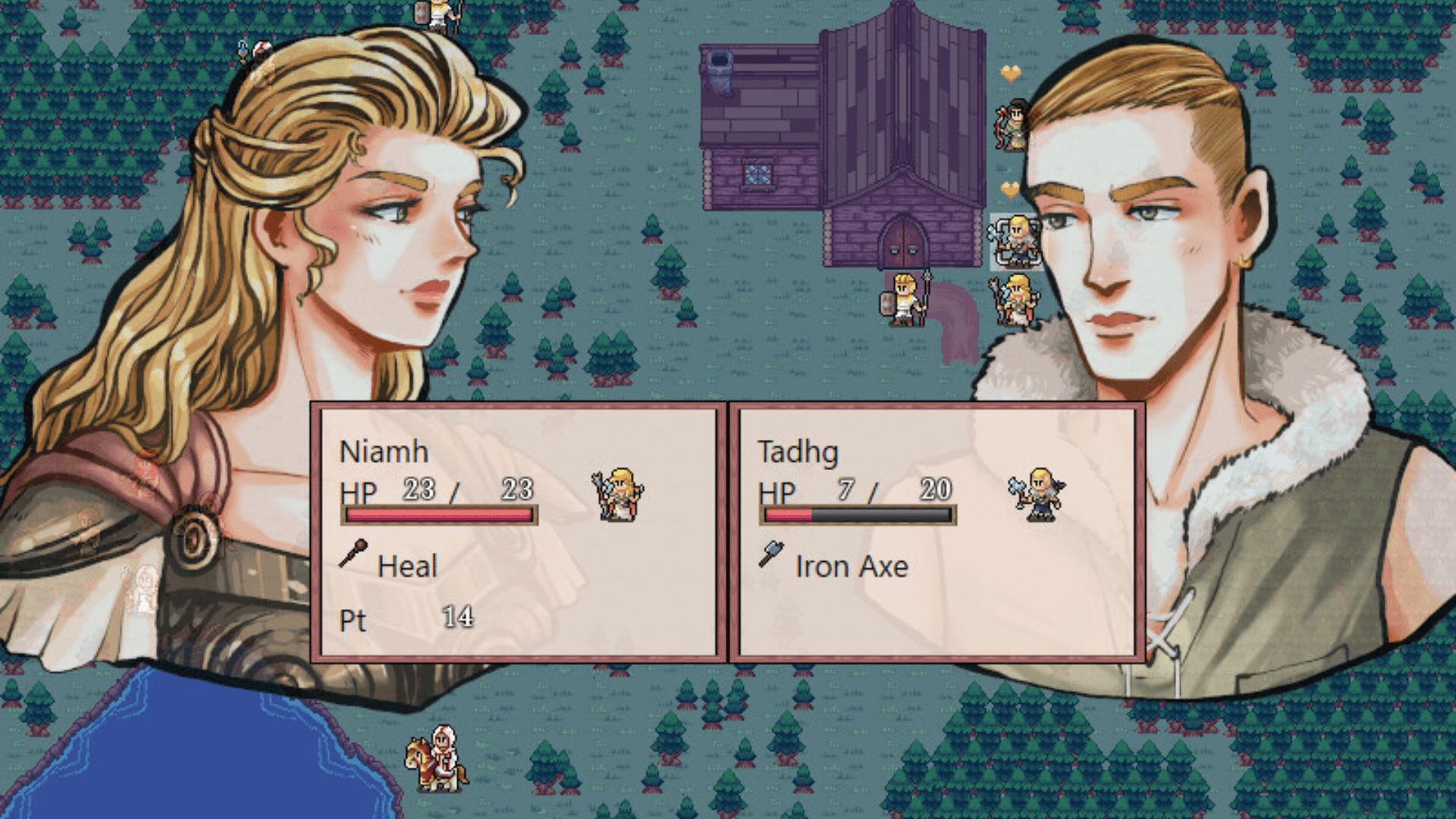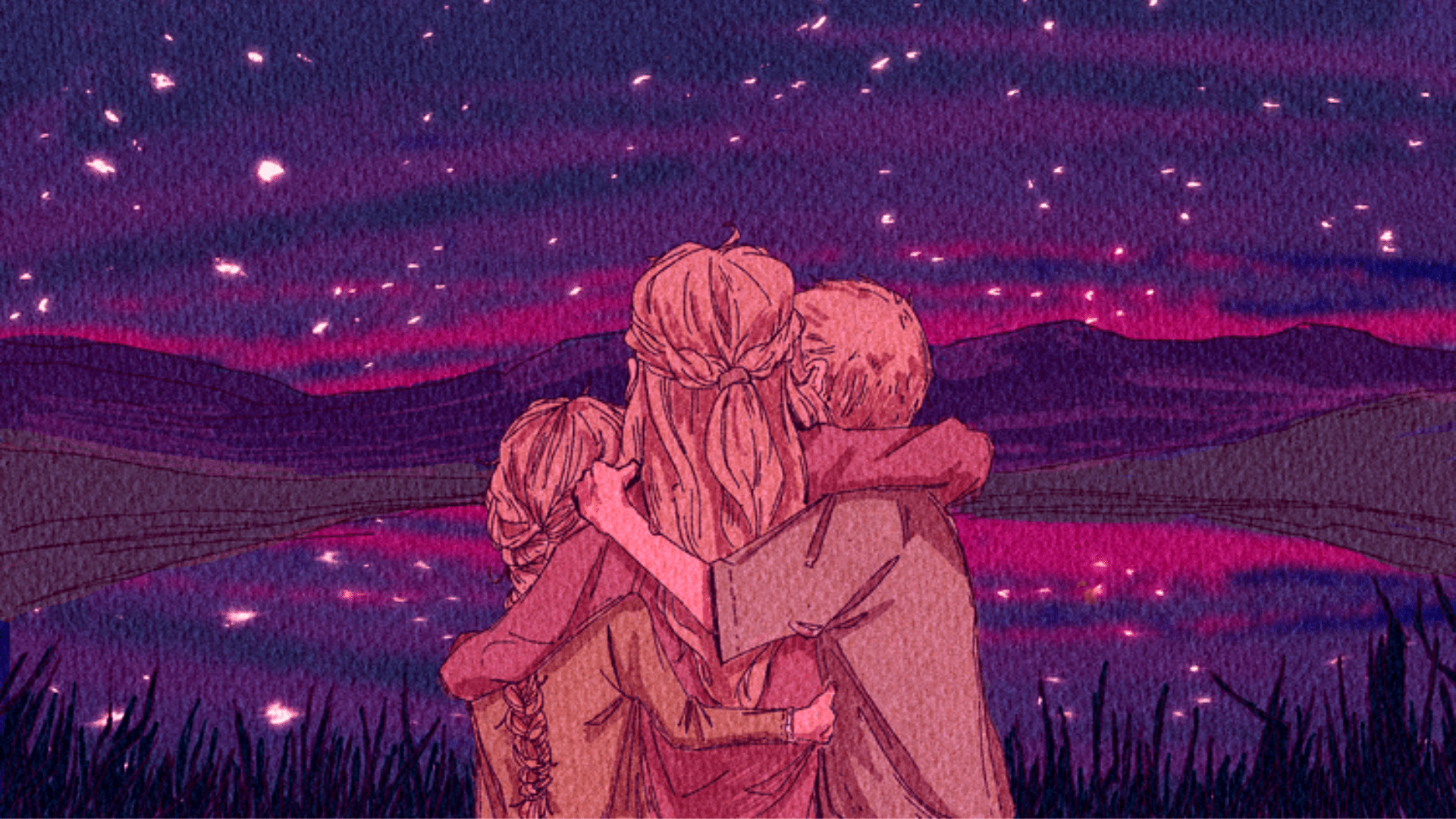Walk with the Living 2 developer on creating ‘Fire Emblem’ but gayer
Story-focused games have always been a haven for LGBTQ+ gamers, particularly games like Life is Strange, BioWare’s role-playing games like Mass Effect and Dragon Age, and even Nintendo’s strategy games like Fire Emblem. The way the majority of these games have interactive, branching storytelling appeals to our own needs for choice and control of the story we want to immerse ourselves in. It is this level of exciting possibility and choice which inspired Walk with the Living 2 developer, Cole Brayfield, to create his own stories.
“I grew up with games,” Brayfield tells Gayming Magazine. As a child it was RPGs on various Nintendo handhelds, then when he hit his teens it was BioWare RPGs, and then as an adult? Story-focused indies like Gone Home. “Artistically, I’ve always been interested in game development. The possibility of interactive, branching storytelling feels inherently more exciting than other types of storytelling.”
Role-playing games direct appeal is allowing players to create their own stories. They do this through a variety of different methods, such as including romance options, or extensive codexes of lore that offer information as much as they do intrigue. For Brayfield, there was also the creation of more informal stories through gameplay that directly appealed to him. For example, a character quickly becoming your favourite due to their ability to survive a difficult battle, or a certain skill that is only unique to them. What the game provides the player can then expand on through fan-art, fanfiction and other methods of fandom and community.
Stories, and the characters that become the chess pieces to help tell them, is important to the entirety of Walk with the Living 2. Set in the same world as the first game, the sequel follows a trio of adult siblings who set out to unravel the mysteries of a deadly spell cast on the youngest of them. Unlike other strategy role-playing games, Brayfield’s take on the genre has players dealing with much more small-scale conflict rather than the epic, sweeping fantasy wars that players may be used to from other titles such as Triangle Strategy and Fire Emblem: Three Houses. What makes up for it though is the personal stakes for players and characters alike. Unlike its predecessor, Brayfield tells us that Walk with the Living 2 has even more branching choices, though there is “less of an emphasis on the permanent death of characters.” One choice could mean the death of your family and everyone you love, another choice may mean salvation.
These personal stakes are further reflected by the relationships the three siblings can form over the course of the game. Each character in the game has the chance to develop relationships – also known as “supports” with other characters, which also provide bonuses in battle. These supports are intertwined with the narrative at specific points, and these relationships develop in response to the main events that occur in Walk with the Living 2. Some of these supports are platonic, but there are plenty which are romantic, and there is even a polyamorous option. However, because player choice is something which Brayfield tells us is a “fundamental principle” driving the Walk with the Living series, each character can only pursue one of their possible support routes per playthrough – making the support you choose significant. Alongside other important choices you can make, the level of variance makes each playthrough of Walk with the Living 2 radically different from one another. And that includes the game’s endings. Brayfield tells us, “it’s difficult to give an exact count to the number of endings in each game because there are so many variances, both big and small.”

And, as to be expected from a game with multiple choices and supports, there are LGBTQ+ characters and narrative threads to be found in Walk with the Living 2. Not only that, but none of these romances are focused around a self-insert, meaning that playersexuality – a term used for characters who have no sexual preference outside of the player – isn’t an issue. Brayfield tells us this was intentional. “Those stories definitely have their value; I loved games like that when I was coming out, and being able to easily put myself into the story helped me “test out” and feel more comfortable in my queerness before I was ready to share it with others.” But, as Brayfield continues, “As I’ve grown older, I’ve seen how important it is to have LGBTQ relationships in games that are between fully developed characters rather than blank slates. The possibilities for meaningful storytelling are so much greater when you know exactly who the characters are when you’re writing and when a storyline is written with queerness in mind.” Furthermore, Brayfield explains that having LGBTQ+ characters naturally integrated into the story made it impossible for players to simply “opt-out” of queerness.
Queerness in video games has steadily improved over time, there are more LGBTQ+ characters than ever, and some developers and publishers see diversity and inclusion as a selling point, rather than the age old fear of alienating their straight, white and male fanbase. It’s no surprise then that the inspiration for Walk with the Living 2 includes games favoured by LGBTQ+ gamers such as Life is Strange, Gone Home and, of course, Fire Emblem. Brayfield’s strategy-RPG works to live side-by-side with these games, factoring in strategic, turn-based combat alongside meaningful relationships.
What’s most impressive though is how Brayfield, outside of working with a few artists to bring certain characters to life, did almost all of the Walk with the Living by himself. “The hardest challenge of being a solo dev has been needing to have a foot in so many different fields and skills. It can be overwhelming at times, but it keeps the experience fresh and exciting! No two days are the same.”
Currently Brayfield isn’t planning to make the Walk with the Living series a trilogy, but they haven’t completely ruled out a third game. In the meantime though, they gave us a little tease for their next game. “For my next project, think: a suburban fantasy setting with magical boys.”
Walk with the Living 2 is available to play on PC.







